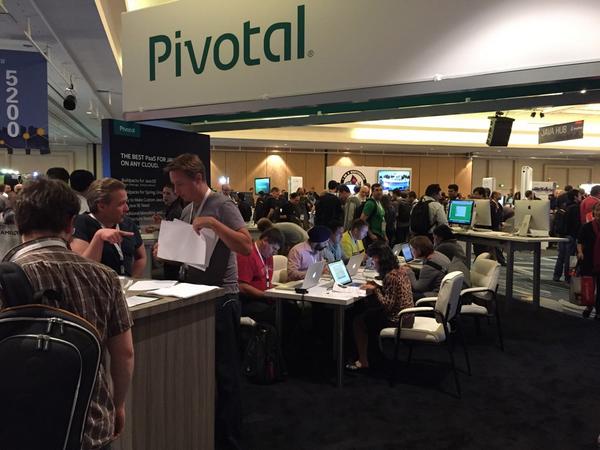This Week in Spring - October 21st, 2014
Welcome to another installment of This Week in Spring! This week I'm talking to developers at the Neo4j GraphConnect conference with my pal (and Neo4j evangelist) Kenny Bastani, and then on Thursday I'll be doing a webinar with my one of my pals on the Vaadin team, Peter Lehto, on how to build Bootiful Vaadin applications - don't miss it!
Next week, I'll be doing a string of appearances at Toronto, New York City, and Boston meetups helping people better build microservices with Spring Boot, Spring Cloud and Cloud Foundry. Register now, come for the code, conversations, pizza and beer! Microservices are a big thing these days, and I'm sure there'll be a lot to talk about so don't miss these events!
As usual, we've got a lot to cover so let's get to it!
- Reactor project lead Jon Brisbin giddily announced the first milestone for Reactor 2.0 which has as its headline feature the Reactive Streams API. The Reactive Streams API is a collaborative effort between Netflix, Typesafe, Pivotal, RedHat, and others that makes easier the task of handling backpressure in a reactive pipeline.
- Spring Data ninja Christoph Strobl has put together a nice look at what’s new in the latest and greatest Spring Data Evans release train.
- I hope you’ll join me this Thursday as Vaadin’s Peter Lehto and I introduce how to build Bootiful Vaadin rich UI applicatons.
- Then, mark your calendars for the good Dr. Syer's webinar introducing Security for Microservices with Spring and OAuth2
-
Spring’s the most productive Java technology, but who wouldn’t like to squeeze more productivity out of the Java language itself by eliminating restarts and instead simply reloading changed byte code? JRebel can help! Adam Koblentz has put together two very cool posts looking at how JRebel can reload Spring XML configuration and how it can reload Spring MVC
@Controllerand@RestController-based@RequestMappingmetadata. - Speaking of Neo4j, they've just published some handy new guides (which they tell me were at least in part inspired by the Spring guides - blush!) that detail how to get started with Spring Data Neo4j and Spring Boot
- Comsysto Gmbh has put together a very nice look at Spring Boot and a Spring Boot applications lifecycle. He describes as, "his favorite timesaving, convention-enabling, autoconfig-creating, bean-making classpath-shaking microcontainer!"
- Readers of this roundup will know that we love JHipster, the Yeoman-based Spring Boot and Angular.js-code generator. JHipster just celebrated its first birthday! Joyeux anniversairre, JHipster!
- Nieraj Singh put together a detailed look at how to manage Cloud Foundry services in Eclipse with our Cloud Foundry plugin.
- Phillip Verheyden (from Broadleaf Commerce, the makers of a Spring-based e-commerce engine) wrote up his thoughts on SpringOne2GX 2014. Thanks, Phillip!
- You are following Groovy-language project lead Guillaume LaForge’s weekly roundup of all that’s awesome in the Groovy ecosystem, aren’t you?
-
Check out this post on The Spring Way blog if you’re trying to marshall arrays of complex types back and forth with Spring’s
RestTemplate. - I always love reading Adrian Colyer’s blogs. Recently, he’s been reviewing one interesting academic paper per week. This last week he looked at a paper that offers that there’s not so strong a link between code-coverage and what that implies for (assurances about) code quality.

